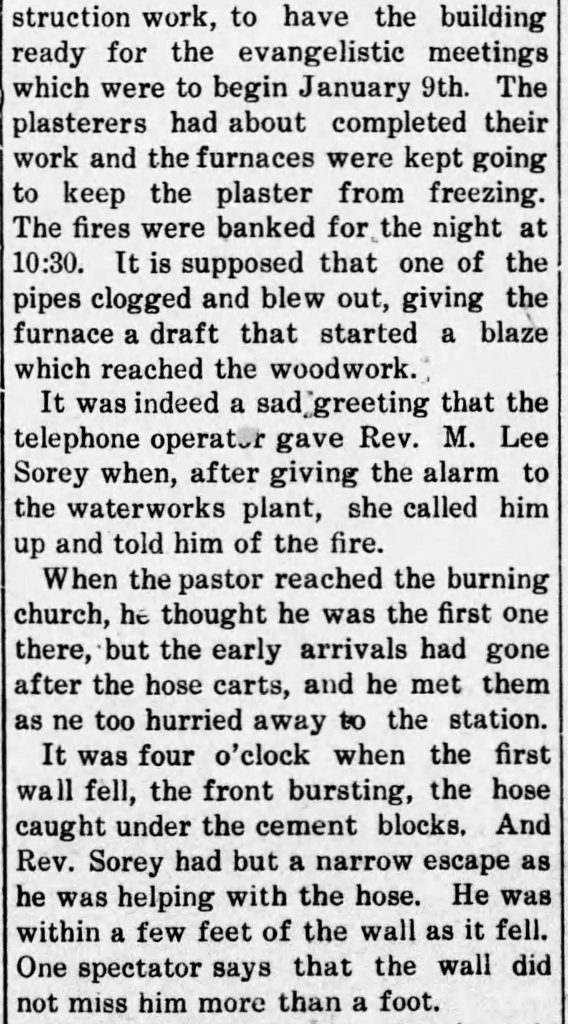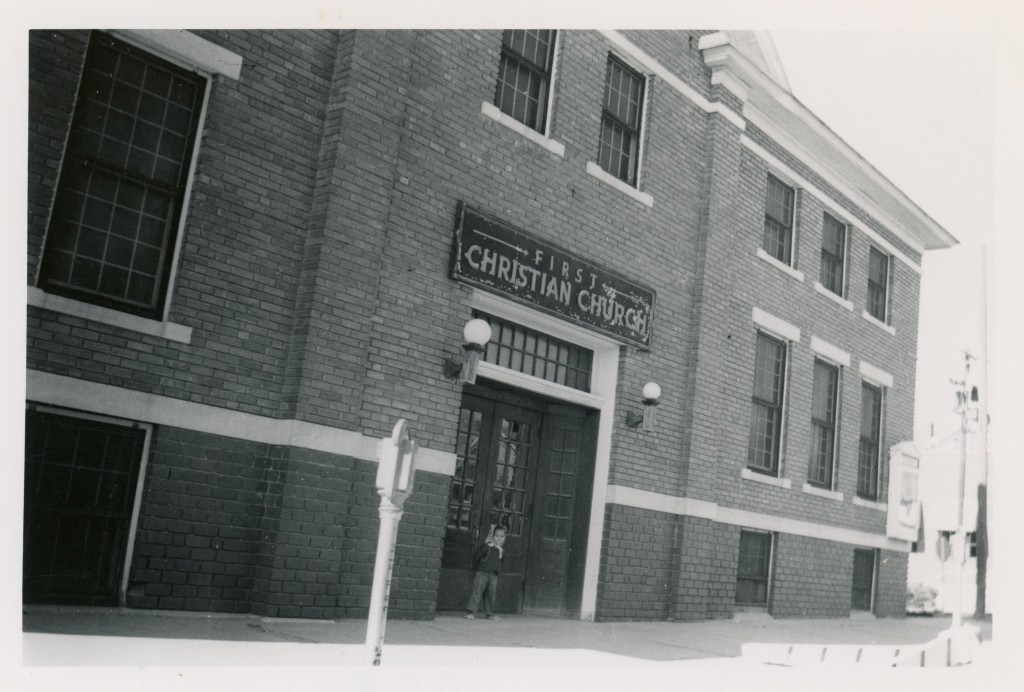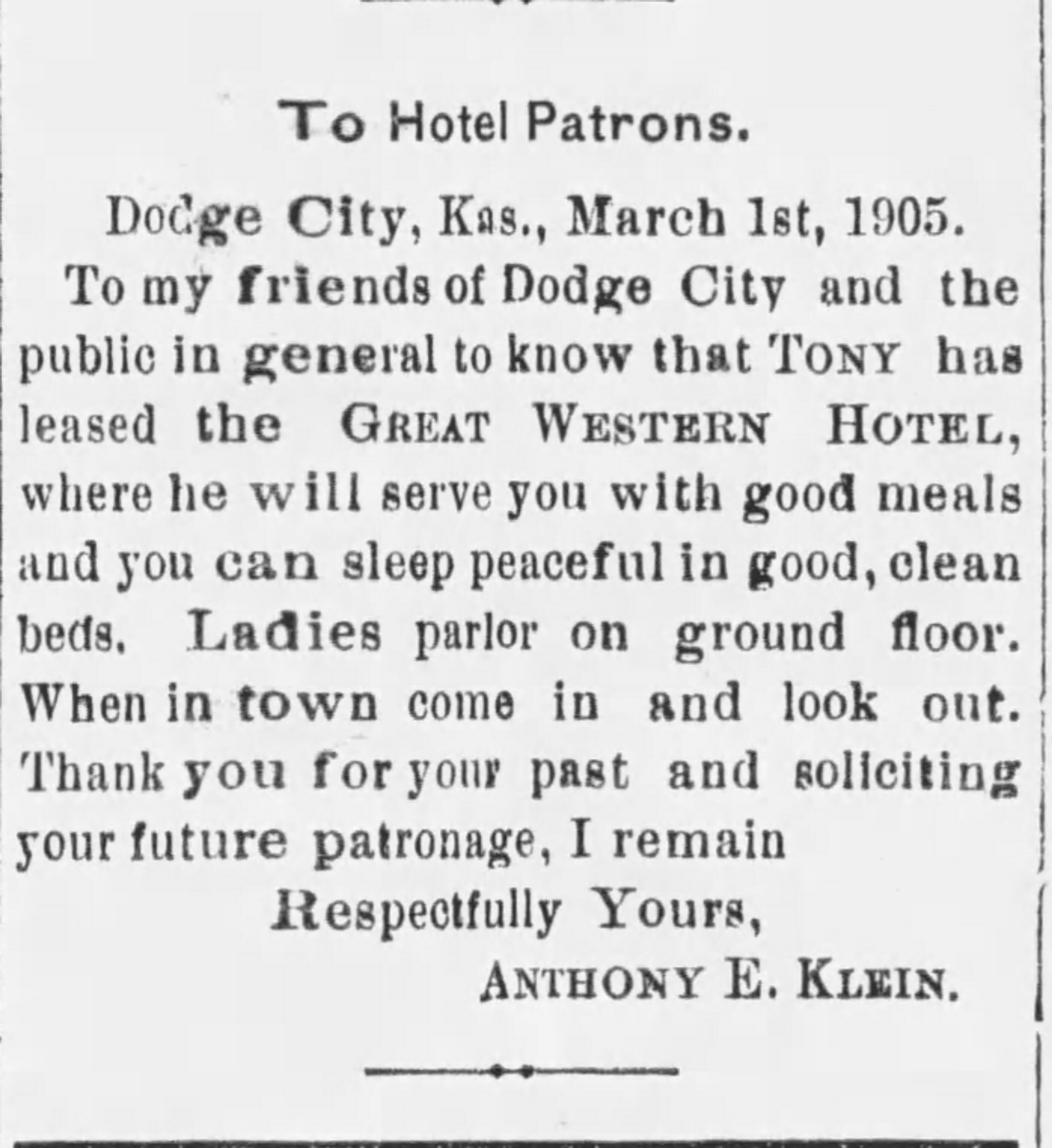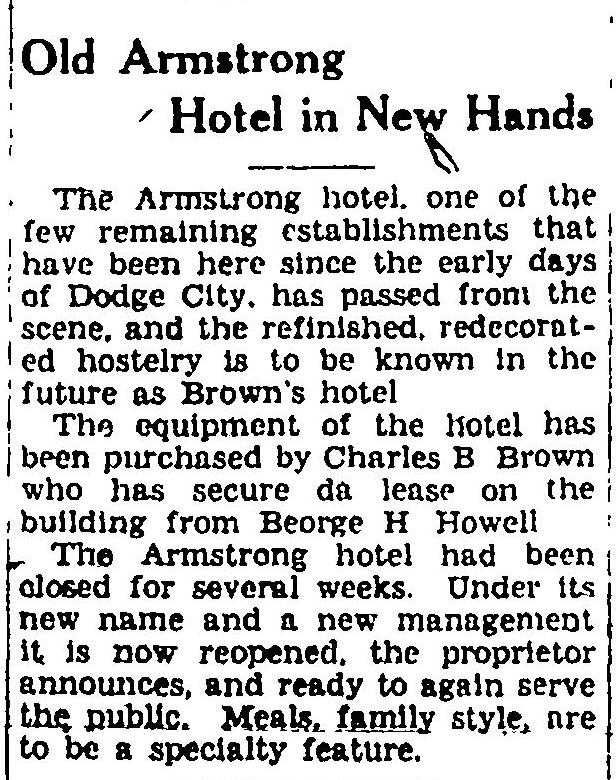715-721 N Second Avenue
If there’s one thing Dodge City loves, it’s a parking lot. Around here, we neglect buildings until there is no choice but to demolish them and then pave over the lot with loads of parking. Unfortunately, planners have ignored the fact that neglect renders those parking lots unnecessary. The southwest corner of Second Avenue and Vine Street is a prime example. I covered the south end of the lot in a previous post about the Elks Home.
This area was mostly residential until the late 1800s. The last frame dwelling to occupy this lot was demolished by 1892. It then sat empty until the Christian Church came along.
The Christian Church congregation initially met at the Union Church, which was the only church building in town and shared by multiple congregations. They bounced around between a few locations over the years before building a stone church in 1900 where the First National Bank currently stands.

By 1908, it was clear that the congregation was in need of a new church building. Although their current building was only eight years old, it required a lot of expensive repairs and upkeep so they started looking for a place to establish something bigger and better.
A lot was purchased in May of 1909 and it appears the Journal incorrectly reported the property’s location at Second and Elm.

The plans were selected later that month for a massive building with a full basement.

That basement proved to be a problem, however, when excavators encountered a large rock ledge that required blasting to get through it.

Julian Parham and L. J. Upp were awarded the building contract in July of 1909. The roof was ready to be added in late November. Big meetings were scheduled for January of 1910 so crews were working overtime in December to get the interior finished. Plaster was in the process of being applied and because of the wet and cold weather, the furnace was stoked and left running overnight to speed up the drying process. Something went horribly wrong the night of December 24, 1909 and the unfinished church building was destroyed by a massive fire.

Typical Kansas winds carried embers for blocks. Only the wet weather and quick actions by fire crews saved neighboring structures from meeting the same fate. Reverend Storey was nearly struck by a collapsing wall as he assisted the firemen with a hose.
Blocks from the burned building were sold to individuals in Bucklin for use in new construction including the new telephone building. Plans were quickly in motion to construct a new church building and work was underway by the beginning of March 1910.
Contractors experienced another setback in May when the building’s wiring was cut by vandals in several places. Crews pressed on and the new Second Avenue Christian Church was dedicated on July 10, 1910.
The 1911 Sanborn Fire Insurance Map shows the Second Avenue Christian Church at 721 N Second Avenue. In 1932, the name was changed to First Christian Church.
The building at Second and Vine served the congregation for more than 50 years. In 1951, a groundbreaking ceremony was held at the location of the new First Christian Church on Fifth Avenue. The old brick building was used until October of 1954. It was then sold to William W Virtue, who had it demolished and replaced with a parking lot.

This photo was taken during a parade in 1956 with the former Elks Home in the background.

The corner has served as a parking lot ever since. Here’s how it looks now:
Downtown Dodge has really been busy lately. Parking along Gunsmoke is often impossible, which is encouraging! What better way to support downtown merchants than by increasing the housing supply within walking distance of these businesses? If you can find a way to make it happen without charging big-city prices, Sherman and I will join you!
If you like what you see, be sure to subscribe (way at the bottom of the post on mobile devices) to receive an email each time a new post is published and share on social media. You can also support my work by donating below. This content is 100% funded by history fanatics such as yourself. Thanks for reading!
Some of you have requested additional donation options. If you would like to send a direct donation, you can now do so by clicking here.
Donation
Your support keeps the content flowing! Make a one-time donation. Your contribution is appreciated!
$5.00


































